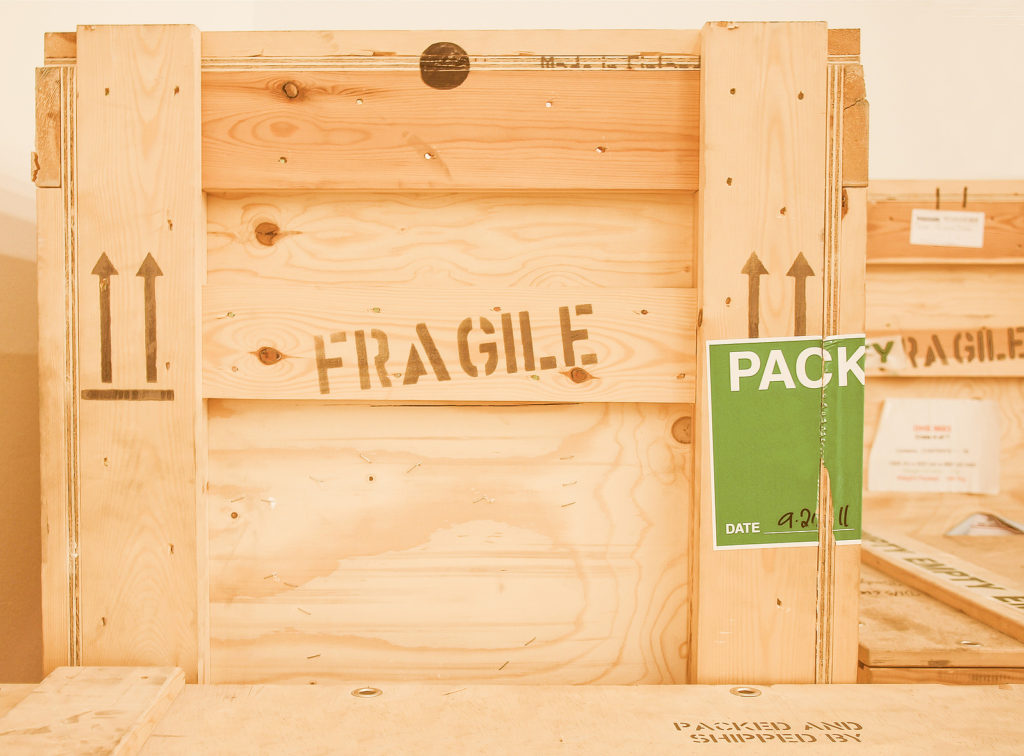Concrete art has become a staple in modern architecture and interior design, offering a unique blend of strength and aesthetic appeal. While concrete is renowned for its durability, it can still be fragile—prone to cracking, chipping, or even complete breakage if not handled correctly.
Whether you’re an artist, interior designer, or business owner shipping handcrafted wash basins, intricate concrete wall panels, or heavy yet delicate concrete benches, ensuring their safe transportation is crucial. Without the right precautions, even a slight impact or mishandling can ruin an entire piece.
In this guide, we will explore why concrete art requires special handling, the best packaging materials to use, the transportation techniques that minimize risk, and the best shipping practices to guarantee safe delivery.
Why Concrete Art Requires Special Handling
Many people assume that concrete is indestructible because of its hard, stone-like nature. However, not all concrete is created equal, and many artistic and functional concrete pieces are quite delicate due to:
- Weight Distribution – Some concrete art pieces are heavy but have thin or protruding sections that can easily break if pressure is unevenly applied.
- Porosity – Concrete is a porous material that can absorb moisture, leading to internal weakening or surface discoloration during transit.
- Finishing Techniques – High-end concrete art often features polished, painted, or textured finishes that can be scratched, chipped, or damaged if not properly protected.
- Joint and Molded Areas – Art pieces with intricate detailing, multiple layers, or fine patterns are at higher risk of structural damage compared to plain concrete slabs.
Thus, it is essential to understand the material's vulnerabilities before packing and shipping.
Best Packaging Materials for Concrete Art Transportation
The right packing materials will provide the first line of defense against impact, moisture, and pressure damage. Here are the essential materials for safely packaging concrete pieces.
1. Custom Wooden Crates
For large or fragile items, wooden crates offer the best protection. Crates should:
- Be custom-sized to fit the piece snugly, preventing movement.
- Have reinforced corners to protect against impact.
- Use padded interiors to cushion delicate edges and surfaces.
2. High-Density Foam & Cushioning
Foam is essential for absorbing shocks. Consider:
- Polyurethane foam for overall cushioning.
- Custom-cut foam inserts for sculptural or uniquely shaped pieces.
- Bubble wrap (for smaller items) to provide additional padding.
3. Corrugated Cardboard & Edge Protectors
- Double-layered cardboard sheets can serve as additional barriers within crates.
- Corner and edge protectors prevent damage to sharp or thin sections of the concrete piece.
4. Moisture Absorbers
Since concrete can absorb moisture, place silica gel packs inside the packaging to prevent humidity-related damage.
5. Shock-Absorbing Pallets
For particularly heavy concrete art, it is recommended to ship them on pallets with rubber dampeners to absorb road vibrations.
Securing Concrete Art to Prevent Movement
A major risk during transportation is internal shifting within the crate. Any movement can cause:
- Cracking from repeated impacts.
- Scratching against the packaging materials.
- Shifting weight distribution, leading to stress fractures.
Methods to Prevent Movement
- Use foam inserts to hold the item securely in place.
- Apply fastening straps to immobilize larger items.
- Use anti-slip mats to prevent shifting inside the crate.
- Avoid placing other objects on top of the package, as the added weight can cause stress fractures.
Best Practices for Loading and Unloading Concrete Art
The way concrete art is lifted and loaded into transport vehicles plays a crucial role in ensuring its safety.
Dos:
- Use forklifts or lifting straps for heavy pieces.
- Load items vertically instead of flat when possible to distribute pressure evenly.
- Train workers on proper handling techniques to avoid accidental drops.
Don’ts:
- Never drag or slide concrete items across surfaces—it creates stress fractures.
- Don’t tilt heavy pieces excessively, as this can cause internal cracking.
- Avoid stacking other shipments on top of concrete art crates.
Choosing the Right Shipping Method
Selecting the right shipping service is just as important as the packaging itself. Here are some options based on the size and fragility of the concrete art piece.
1. Freight Shipping for Large Pieces
For oversized pieces like concrete benches or large sculptural installations, opt for freight services that specialize in fragile deliveries.
- Choose "White Glove" delivery for extra care.
- Ensure that the freight service provides climate-controlled transport if needed.
2. Local Couriers for Small or Medium Pieces
If shipping smaller items like wash basins, a reputable local courier service with experience in fragile deliveries may be a better option.
3. Dedicated Art Shipping Services
For high-value, one-of-a-kind pieces, use a specialized art shipping company that provides customized handling, packaging, and installation services.
Ensuring Safe Delivery and Final Inspection
Upon arrival at the destination, always:
- Inspect the packaging for damage before signing the delivery confirmation.
- Unpack with care, avoiding sudden movements that could damage fragile sections.
- Check for structural integrity—look for any hairline cracks, chips, or scratches.
- Document any damages with photos and report them to the shipping provider or your insurance company immediately.
Final Thoughts
Transporting delicate concrete art requires specialized packing techniques, secure handling, and careful transport logistics. Whether you’re shipping a luxury wash basin, an artistic concrete bench, or an intricate concrete wall panel, following these best practices will minimize risks and preserve the integrity of your artwork.
By investing in high-quality materials, custom crating, and choosing the right shipping service, you can ensure that your concrete creations reach their destination without damage.

